#77: The Rebel Yell, Plantation Rice Recipes, and a Juneteenth Celebration Sleepover
For South Carolina history lovers far and wide! Enjoy weekly SC history and upcoming SC historical events
Welcome to the first 100 days of the South Carolina History Newsletter! My name is Kate Fowler and I live in Greenville, SC. I have a 9-5 job in marketing, and outside of work, have a deep love of history. I started this newsletter as a passion project to learn more about our beautiful state and build a community of fellow SC history lovers along the way! To establish a foundation for the newsletter and to grow my expertise on a wide variety of South Carolina historical topics, this past February I challenged myself to post 100 newsletters in 100 days. After this coming May 20th, the newsletter will become weekly. Thank you for joining the journey!
Dear reader,
Welcome to Newsletter #77 of The South Carolina History Newsletter! I’m so happy you’re here.
As always, I’d like to also extend a special welcome to the following new subscribers — woohoo! Thank you for subscribing.
kbowens1
yida.charlie
cjordan1388
lwjlaw
tidbitrs
I hope you enjoy today’s newsletter, and as always, please feel free to reply to this email with your ideas and suggestions on South Carolina history topics you’d like to learn more about. I’m only a click away.
Additionally, please join us & keep the conversation going by becoming a member of our SC History Newsletter Facebook Community here! I can’t wait to meet you.
And now, let’s learn some South Carolina history!
Yours truly,
Kate
(Writing from Greenville, SC)
Refer your friends to SC History Newsletter and win a “Best of South Carolina” gift basket!
Hi everyone! I am SO grateful and excited that there are now 484 free subscribers (and 15 paid!) for the SC History Newsletter. Y’all are amazing!! I have a goal for us to get to 1,000 subscribers by May 20th. Can you help me achieve my goal? And let’s make it fun by making it a contest!
HOW TO ENTER: By using the button below, you can share a unique link to the SC History Newsletter with your friends. Each time one of your friends signs up for the newsletter from your unique link, I can see on my dashboard!
WINNER: The person who refers the most people who sign up for the SC History newsletter will win the “Best of South Carolina” basket on May 20th! I will keep everyone posted on the “standings” as they come in.
THE PRIZE: The basket of goodies (valued at $100) will include iconic sweet & savory South-Carolina made goods — and a few other surprises as well!
Start sharing today! Thank you so much!
➳ Featured SC History Event
Please enjoy our featured SC History Event below, and click here to visit my SC History Events Calendar that organizes all the upcoming SC history events I have discovered. Please let me know if you’d like to add an event to the calendar! Reply to this email or send me a note at schistorynewsletter@gmail.com.
Thursday, June 13th from 6:00 pm - 6:00 am | “10th Annual Juneteenth Celebration Sleepover with Joe McGill & Friends” | Historic Mitchelville Freedom Park | Hilton Head Island, SC | $30 that includes dinner
“Immerse yourself in a profound overnight experience at Historic Mitchelville Freedom Park with Joe McGill of The Slave Dwelling Project during the 2024 Juneteenth Celebration. This unique sleepover event is an invitation to reflect on history, freedom, and the stories that have shaped the experiences of formerly enslaved people across America.
The evening begins with an al fresco traditional Gullah dinner, providing a taste of local heritage cuisine, and art and crafts vendors, followed by a night under the stars in the serene setting of the park. Participants will be provided with basic camping gear, including tents (for the first 10 groups registered), but are encouraged to bring their own comfort items such as sleeping bags, cots, pillows, and camp chairs to enhance their overnight experience.
Sleeping over at the park is encouraged to fully engage with the historic environment and the communal spirit of the event, though it is not required. There will be security present and park’s bathrooms will remain open throughout the night for convenience.
Join Joe McGill and friends for a night of storytelling, reflection, and community building in a historic setting. This sleepover offers a unique opportunity to connect with history where it happened and create personal memories in the spirit of Juneteenth.”
➳ SC History Fun Facts
I.
Did you know that during the Civil War, Confederate troops had a specific battle cry they called the “Rebel Yell”?
The “Rebel Yell” was a battle cry used by Confederate troops to boost their own morale, to intimidate Union troops, and to shore up their courage when charging into the heat of battle.
Accounts of the yell claim it sounded like a “rabbit’s scream” or a “cougar’s scream.”
While the origin of the yell is unclear, there are those that think it might have its origins in Native American battle cries.
Others think that the Rebel Yell might be linked with the battle cries of Scottish Highlanders or perhaps it was meant to emulate cries used by men in fox hunting. Sidney Lanier, the poet and Confederate veteran, described his unit's yell as "a single long cry as from the leader of a pack of hounds.”
There are several recordings of Confederate veterans (see videos below!) that show the soldiers performing the Rebel Yell.
You will hear in the videos below that the yells are not all the same. There might have been “several distinctive yells associated with the different regiments and their respective geographical areas.”
In Ken Burns’ documentary The Civil War, historian Shelby Foote notes that the yell would have sounded like “a foxhunt yip mixed up sort of a banshee squall.”
In his autobiography My Own Story, SC-born American financier and statesman Bernard Baruch recalls how his father, a former surgeon in the Confederate army, at the sound of the song "Dixie," would jump up and give the rebel yell, no matter where he was:
"As soon as the tune started, Mother knew what was coming and so did we boys. Mother would catch him by the coattails and plead, 'Shush, Doctor, shush'. But it never did any good. I have seen Father, ordinarily a model of reserve and dignity, leap up in the Metropolitan Opera House and let loose that piercing yell."
Here are some other colorful quotes that describe the Rebel Yell:
“The Confederate yell was intended to help control fear. As one soldier explained: ‘I always said if I ever went into a charge, I wouldn't holler! But the very first time I fired off my gun I hollered as loud as I could and I hollered every breath till we stopped.’ Jubal Early [Confederate military officer] once told some troops who hesitated to charge because they were out of ammunition: Damn it, holler them across.”
— Historian Grady McWhiney
“Then arose that do-or-die expression, that maniacal maelstrom of sound; that penetrating, rasping, shrieking, blood-curdling noise that could be heard for miles and whose volume reached the heavens–such an expression as never yet came from the throats of sane men, but from men whom the seething blast of an imaginary hell would not check while the sound lasted.”
— Confederate Colonel Keller Anderson of Kentucky's Orphan Brigade
“In an instant every voice with one accord vigorously shouted the 'Rebel yell,' which was so often heard on the field of battle. 'Woh-who-ey! who-ey! who-ey! Woh-who-ey! who-ey!' etc. (The best illustration of this "true yell" which can be given the reader is by spelling it as above, with directions to sound the first syllable 'woh' short and low, and the second "who" with a very high and prolonged note deflecting upon the third syllable "ey.")”
—Confederate Colonel Harvey Dew of the 9th Virginia Cavalry, in Century Illustrated Monthly Magazine (1892)
“At last it grew too dark to fight. Then away to our left and rear some of Bragg's people set up 'the rebel yell'. It was taken up successively and passed around to our front, along our right and in behind us again, until it seemed almost to have got to the point whence it started. It was the ugliest sound that any mortal ever heard – even a mortal exhausted and unnerved by two days of hard fighting, without sleep, without rest, without food and without hope ...”
— Narrative of Union Lieutenant Ambrose Bierce, 2nd Brigade, 2nd Division, XXI Corps, Army of the Cumberland, at the Battle of Chickamauga (Last Union defenses on Horseshoe Ridge, September 20, 1863)
“...the Southern soldiers cannot cheer, and what passes muster for that jubilant sound is a shrill ringing scream with a touch of the Indian war-whoop in it.”
— William Howard Russell (1827-1907), Irish reporter and war correspondent for The Times newspaper based in London
Please click on the video below to hear rare audio below of the Confederate Army’s Rebel Yell
Please click on the link below to hear the Rebel Yell from the Confederate veterans as a group and then you can hear each soldier individually
And here are modern day Civil War reenactors training to do their own Rebel Yell
Please scroll to the bottom of this email for my source for this section
Please leave a comment below!
II.
Rice was a staple of Lowcountry cooking on South Carolina Plantations and did you know it was used not only in main courses but also in desserts?
(Note from Kate: Inspired by my research on Carolina Gold rice and rice plantations yesterday, I wanted to link that learning with a book I recently read, and highly recommend, called ‘An Antebellum Plantation Household’ by Anne Sinkler Whaley LeClerq. From that book, I wanted to share some rice recipes from the plantation kitchen of Emily Wharton Sinkler.)
Emily Wharton Sinkler was a beautiful young woman from a prominent Philadelphia family, who at age 19 in 1851, married a South Carolinian and plantation owner named Charles Sinkler. Emily moved 800 miles south to her new home on a cotton plantation in the “swampy, low country region of the Upper Saint John’s Parish — an isolated area of cotton plantations on the Santee River in South Carolina.”
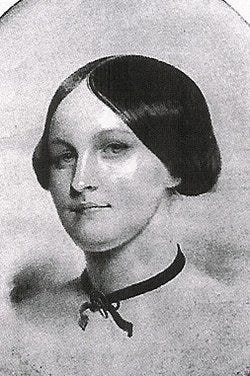
Emily wrote monthly letters to her northern family in Philadelphia and recorded keen observations about her adopted home.
Her letters reflect “the vibrancy and affluence of Low Country plantation society at the peak of its power and wealth, and they also record her philosophical indisposition to slavery and document her significant role in managing the plantation.”
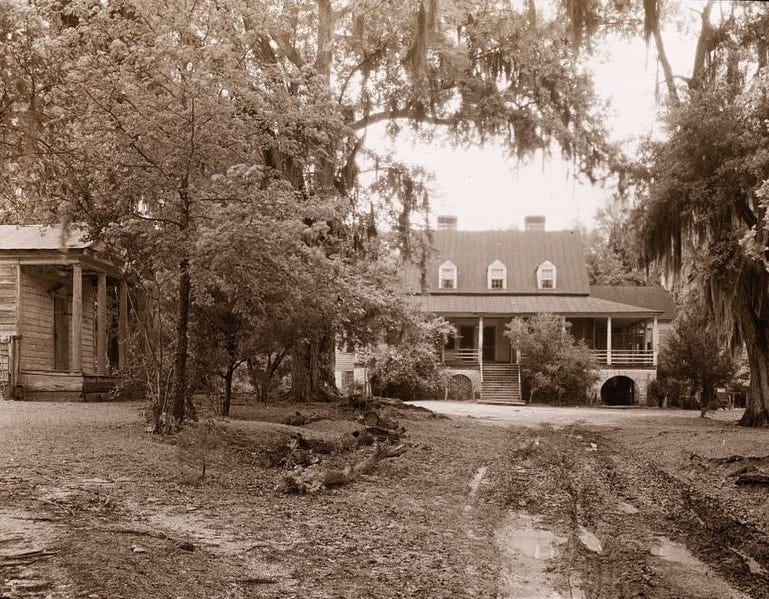
Emily embraced her role in managing multiple Sinkler plantations, and she particularly embraced her role in the kitchen.
The recipes she left behind (back then called “receipts”) show a variety of cultural influences from Huguenot, African, Low Country, Virginian, and Pennsylvania. The recipes also show the reliance on locally grown ingredients.
Adding to our discussion of rice plantation culture from SC History Newsletter #76 yesterday, here are a few of Emily Wharton Sinkler’s rice-based recipes that are shared in the book ‘An Antebellum Plantation Household’ by Anne Sinkler Whaley LeClerq — who FYI is the great-great-great granddaughter of Emily Wharton Sinkler herself!
An Edging for Hashes
“Boil 1 pt rice 1/2 an hour; season with a little butter and salt. Form the rice round the dish about 3-4 inches high. Rub it once with yolk of an egg and set in the oven to brown. When done turn the hash into the middle of the dish. Potatoes mashed with butter, salt and milk formed the same as the rice are even better.”
French Rice Pudding, Mrs. Markive
One small tea cup sugar; 3 pts milk; nutmeg to the taste; 5 eggs; 1 tbspf Rosewater, little cinnamon, 1/4 lb butter. Boil the rice in the millk till quite soft. Beat hte yolks till light. Add to the rice mixture. Beat egg whites till stiff and fold into rice mixture. Make in moderate oven.
Old Time Rice Pudding
“To 1 quart of milk add 4 tpsfuls sugar, 4 spoonfuls unwashed rice, 2 spoonsful butter and 4 eggs with a few pieces of stick cinnamon added. Bake in moderate oven until rice is soft.”
Rice Bread
“To one pint Rice Flour add one pint Clabber, sour milk, butter milk or sweet milk acidulated, a little Salt, papsoonful of butter or cream, with half a teaspoonful of Saleratus [baking soda] or cooking soda, stir the latter with the liquid, mix well and rapidly, and put in a greased pan. Eat with fresh butter, just from the chun, if you want it in perfection; but should your taste have been vitiated by life in the city, and your Patriotism will permit use the best Northern, if you can get it. Should your feelings for the Yankee article be too strong however, you will find syrup or honey quite tolerable.
Rice Cakes, Mrs. Gaillard
“Mix 4 large spoonfuls soft boiled rice; 1 spoonful butter, 2 eggs and 1 gill milk together; stir in rice flour; for into little round cakes and bake.
Rice Scones
One half pint flour, 1 cup boiled rice, 1 full tablespoon baking powder, 1 cup milk, 1 teaspoon salt, 2 tablespoon butter. Add salt and powder to flour and sift. Rub in butter and rice. Gradually mix with milk. This must be soft enough to drop from a spoon. Dip spoon into boiling water and drop dough on a greased pan. Bake in quick oven.
Please scroll to the bottom of this email for my sources for this section
Do you have favorite South Carolina heritage rice-based recipes? Please share in the comments below or on our SC History Newsletter Facebook Page!
➳ Quote from an SC historical figure
“Since I wrote we have had another dinner party tho not large. Elizabeth Huger has been getting married and came up to pay Sister Margaret a bridal visit so we dined them. We had soup, boiled turkey and celery sauce, roasted haunch of venison and tongue for first courses; Charlotte Russe, epergne of custard and apple snow; I can see your incredulous look when you come to Charlotte Russe, but you may spare it for it was perfectly successful. I have Mrs. Hampton’s receipt [recipe] which she paid ten dollars for and every thing was right about it even to the ladies fingers around it. To be sure I had a very accomplished servant [slave] from The Eutaw [their plantation] to help me who has been accustomed to making them. You would have been amused I know at the style in which every thing was conducted, a roll at each plate, napkins folded fan shape, finger classes each with a piece of lemon, etc.”
—Emily Wharton Sinkler to Mary Wharton, February 26, 1856. Emily here refers to Mary Cantey Hampton of Columbia, SC who married Wade Hampton in 1801 (refer to SC History Newsletter #74 on Wade Hampton)
Rebel Yell article sources:
Bordewich, Fergus M. “Civil War Veterans Come Alive in Audio and Video Recordings.” Smithsonian Magazine, 4 Oct. 2011, https://www.smithsonianmag.com/history/civil-war-veterans-come-alive-in-audio-and-video-recordings-97841665/. Accessed 27 Apr. 2024.
“The Rebel Yell: The Seething Blast of an Imaginary Hell.” Essential Civil War Curriculum, https://www.essentialcivilwarcurriculum.com/the-rebel-yell.html. Accessed 27 Apr. 2024.
Rice recipes article source:
LeClercq, Anne Sinkler Whaley. An Antebellum Plantation Household. University of South Carolina Press, 2006.
I always want to improve my work. Answer the poll below to give me your review of today’s newsletter. I also welcome your suggestions for new content! Simply reply to this email with your ideas. Thank you!




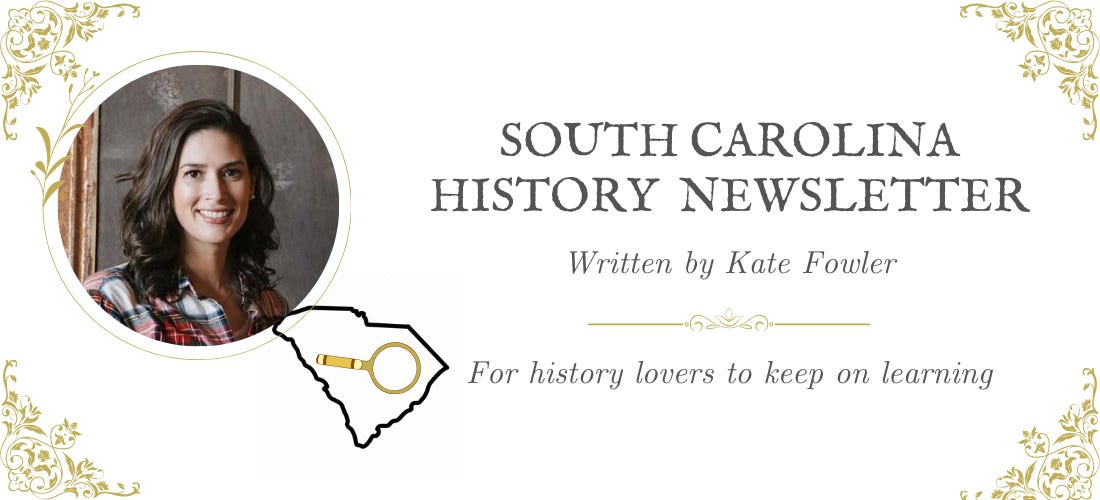



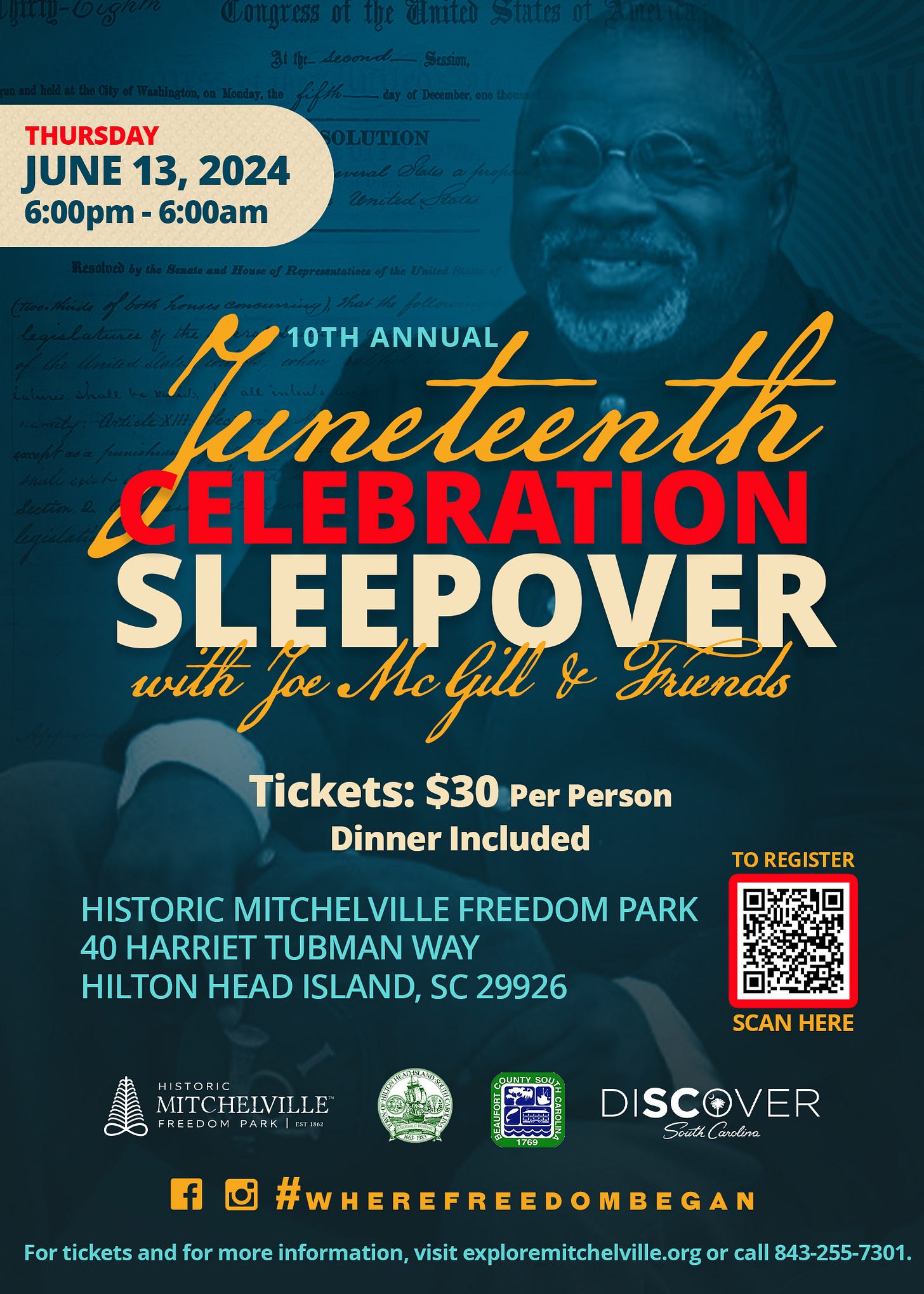

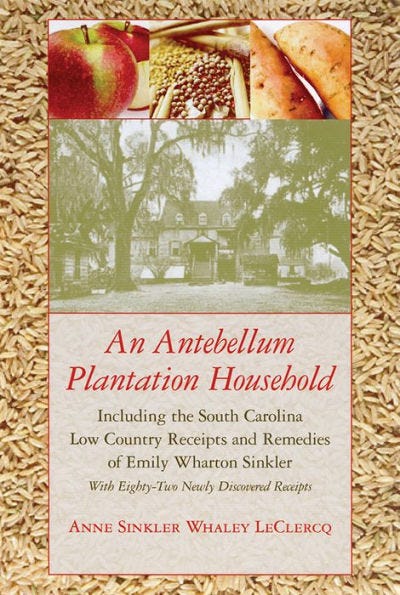




I LOVED this episode regarding the Rebel Yell. It answered a long-standing question I've had about it. Side note: The dogs around the woods where I live in Upstate SC, sound EXACTLY like what was demonstrated in the videos. First time I heard them, it was quite unnerving and actually reignited my wonder about the Rebel Yell. I really enjoy this newsletter.